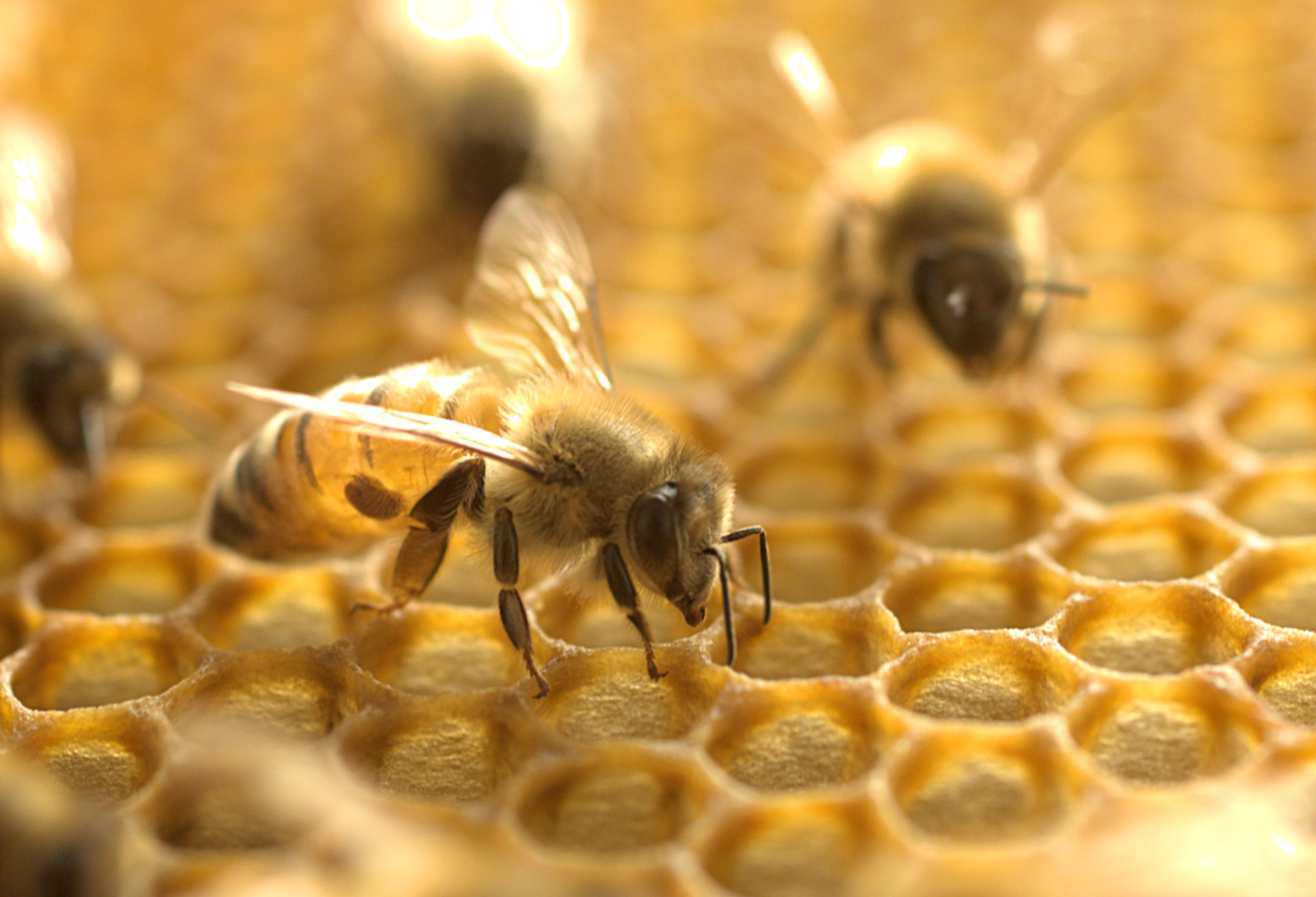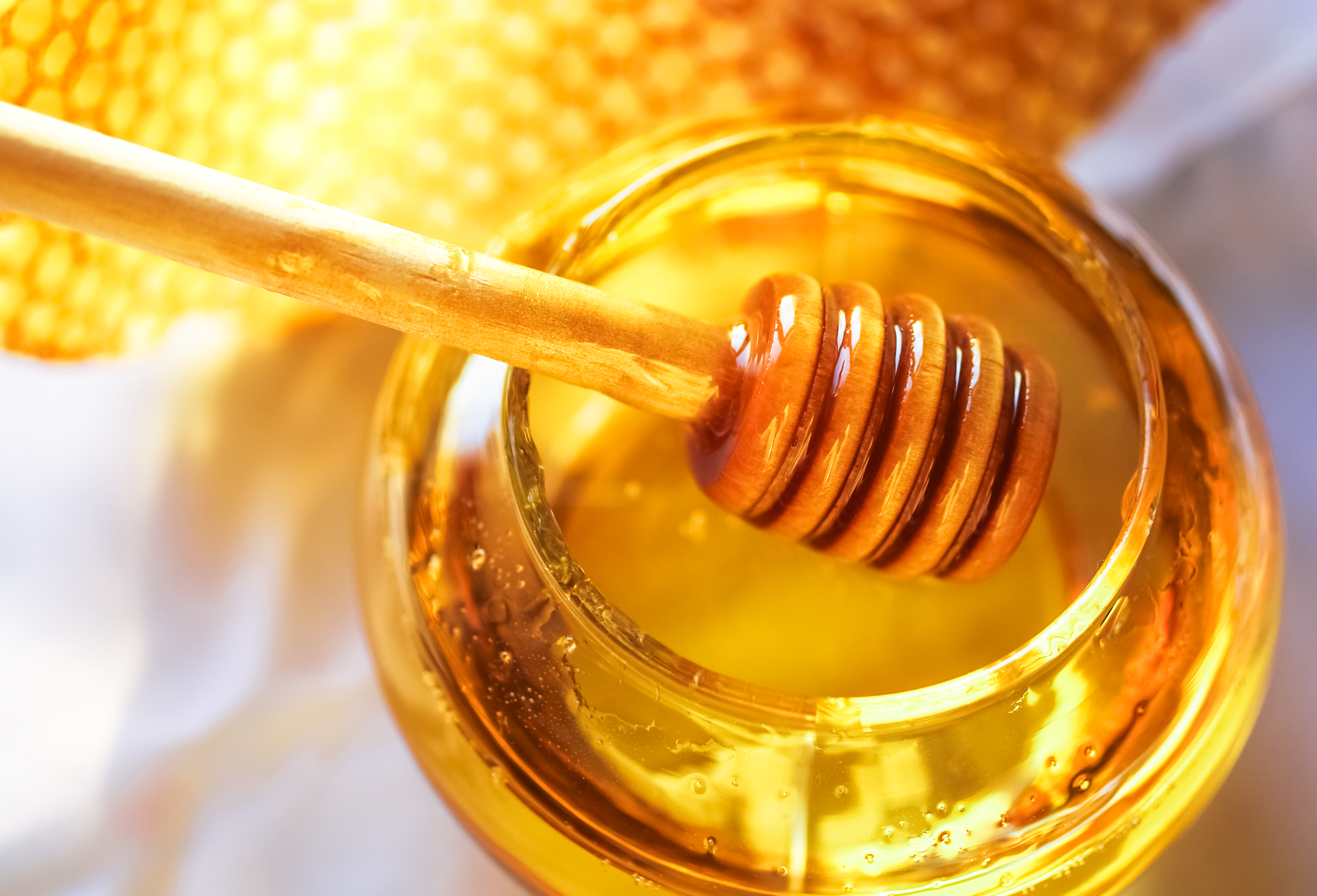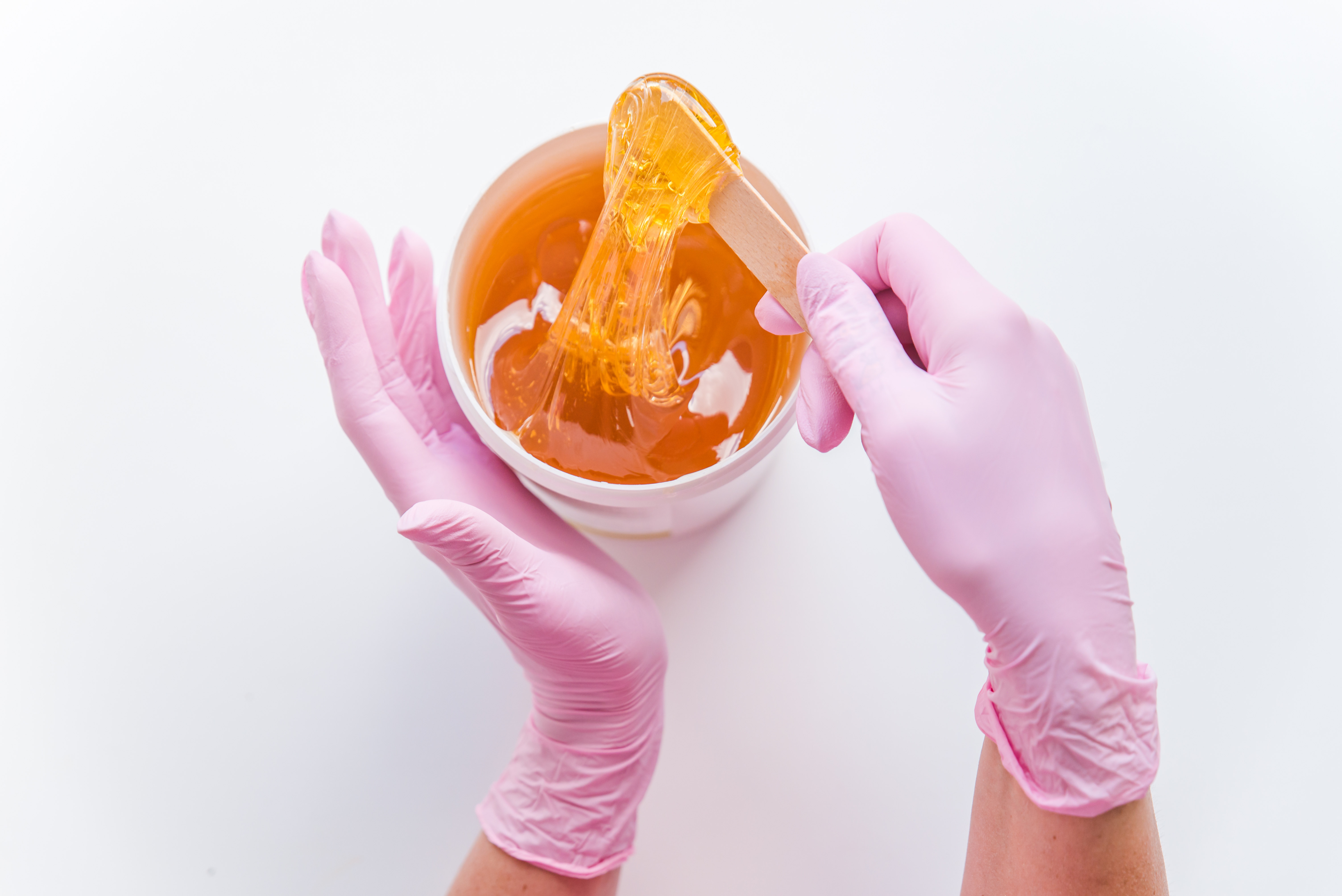In 2009, U.S. Secretary of Agriculture Tom Vilsack designated the 3rd Saturday of every August. Vilsack recognized that honey bees are important for the environment and contribute to our national economy. In naming the day, Vilsack said, “Honey bees are critical to the process of pollination of our crops throughout our country and an important part of maintaining a stable and sustainable ecosystem.”
To celebrate, today we’d like to share some facts about honey bees and the delicious food they provide.

Honey bees work really hard to make all that honey!
In 2019, 2.81 million honey bee colonies produced a total of 157 million pounds of honey in the United States. A single beehive can produce an annual total of 30 to 100 pounds of honey. One pound of honey requires bees to visit around 2 million flowers and fly over 55,000 miles. A single honey bee only produces 1/12 of a teaspoon of honey in its lifetime.

Humans have loved honey for most of our history!
The oldest beehives found intact were discovered in Israel in 2007. They are estimated to be approximately 3,000 years old! The hives were made out of straw and unbaked clay and had space for around 100 colonies. That means that this ancient beekeeping industry could have produced between 3,000 to 1,000 pounds of honey per year! While this was the oldest proof of professional beekeeping, a cave painting in Valencia, Spain shows that honey harvesting may go as far back as 15,000 years.
Honey has some interesting uses beyond food!
Honey is low in moisture and naturally acidic, making it a difficult place for bacteria to thrive. These antibacterial properties made honey a popular remedy for cuts and burns in ancient times. Despite being low in moisture, honey’s antioxidant and anti-inflammatory properties act as a natural moisturizer for itchy skin and skin lesions.

Honey has also been used in hair care. Not only does it lessen dandruff, it helps condition your hair and keep it healthy.
A popular medicinal use for honey even today is as an immunity booster against local allergens. Because local honey has been collected from the area’s flora, a teaspoon of local honey per day helps your immune system stand up against natural allergens.
Honey bees do so much more than provide us with honey!!
While we all enjoy honey, the most important function of honey bees is their pollination. Hunting for nectar results in honey bees pollinating $20 billion dollars worth of U.S. crops every year. That means that ⅓ of American food has honey bees to thank!